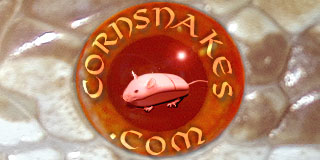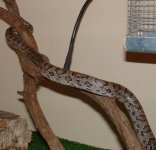Filovirus
But you can call me Bob..
i was sold a 6 month old ghost corn.... i looked in books and thought it looked mor charcoal... i wrote to a guy in scotland and he said it was a type B anerythristic....
i understand anerythristic (no red pigment) and he told me it's type b 'cos Kellogg has a yellow shade under his chin...
so what is he....?? is nery a larger classification meaning no red and he can still be a ghost....
looking for some infomation cos he's starting to develop personality disorders...
oh yeah.. and some of his saddles are broken and disjointed.. does this make him motely too..???
Bob
i understand anerythristic (no red pigment) and he told me it's type b 'cos Kellogg has a yellow shade under his chin...
so what is he....?? is nery a larger classification meaning no red and he can still be a ghost....
looking for some infomation cos he's starting to develop personality disorders...
oh yeah.. and some of his saddles are broken and disjointed.. does this make him motely too..???
Bob
Attachments
Last edited:

